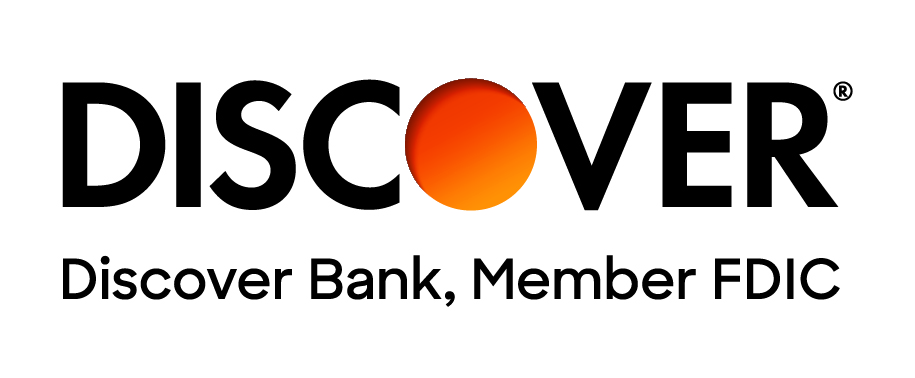UPDATE: On July 18, 2024, the 8th Circuit Court of Appeals issued a ruling that has entirely blocked the SAVE Plan. We are still awaiting guidance from the U.S. Department of Education. Borrowers enrolled in the SAVE Plan will need to stay tuned for updates on how this latest ruling will affect their monthly payments.
As a student borrower, you may have already heard of income-driven repayment (IDR) plans; which uniquely determine a borrower's monthly payment based on their income, not their outstanding balance. If you have had experience navigating these repayment plans in the past, you may recall the acronyms and the complexity of the options. Income-Based Repayment (IBR), Income Contingent Repayment (ICR), Pay As You Earn (PAYE), and Revised Pay As You Earn (REPAYE). Unfortunately, some borrowers have faced issues with these repayment plans, such as difficulty in qualifying or making payments for years without seeing any progress. However, there is a new plan that you need to understand, the Saving on a Valuable Education (SAVE) repayment plan.
SAVE Plan Broken Down
The SAVE Plan expects to replace the REPAYE plan. Any borrowers who were previously repaying under the REPAYE plan will be automatically placed in this plan once loans re-enter repayment. This plan is expected to offer the lowest monthly payments of all IDR plans. While the entire plan won’t take effect until 2024, there will be an option to choose this plan once your loan re-enters repayment this fall 2023. This plan will be phased in; there will be some benefits offered this year, and additional benefits will be rolled out next year.
SAVE Plan – Quick Overview
The first phase will be available for borrowers when federal student loans re-enter repayment in September 2023.
Phase 1, SAVE Plan: Fall 2023
Monthly payments will be based on 10% of the borrower’s discretionary income. Discretionary income will be based on 225% of the federal poverty guideline. If your monthly payment doesn’t cover your monthly accruing interest, any interest not covered by your monthly payment will be eliminated. That means your loan balance will not grow. You will not be required to provide your spouse’s income if you file your taxes married and file separate.
In the first phase, the repayment plan will follow the forgiveness rules that currently exist for the REPAYE plan. If you are only repaying undergraduate debt, any remaining balance after making 20 years of payments will be forgiven. If you are repaying undergraduate and graduate debt, any remaining balance after making 25 years of payments will be forgiven.
Phase 2, SAVE Plan: July 1, 2024
The second phase will be available for borrowers in July 2024. This phase will cut payments for undergraduate loans in half—reducing payments from 10% of discretionary income to 5% of discretionary income. If you have both undergraduate and graduate student loans, your payments will be based on a weighted average between 5% and 10% of your discretionary income based on the original principal balances of your loans.
When it comes to forgiveness, there will be some significant differences. If you are a borrower with an original principal balance of $12,000 or less, you will receive forgiveness after making 10 years of payments. For every additional $1,000, the repayment period will increase one year before forgiveness. There will be cap on this; for those who only have undergraduate loans, your loan repayment term will not exceed 20 years. For those with undergraduate and graduate loans, your loan repayment term will not exceed 25 years.
In addition, borrowers can make “catch up” payments to get credit for all other periods of deferment or forbearance. This can be extremely helpful to borrowers who needed a loan forbearance years ago, but now have the means to make up the payments and potentially qualify for forgiveness faster.
Sheltered Income
Under the SAVE Plan, determining your discretionary income will be based at 225% of the federal poverty guideline. Most other income driven repayment plans use 150% of the federal poverty guideline, and the income-contingent repayment plan uses 100%.
To determine your discretionary income, you would subtract your household income from 225% of the federal poverty guideline.
Let’s build an example to demonstrate how this plan is applied.
You and your spouse are married and file your taxes jointly. Your household adjusted gross income is $70,000.
The 2023 federal poverty guideline for the lower 48 states (will differ for Alaska and Hawaii) for a family of 2 is $19,720. 225% of the $19,720 is $44,370.
Your discretionary income for the SAVE Plan is: $70,000 - $44,370 = $25,630
SAVE Plan Monthly Payments, Fall 2023
Monthly payments under the SAVE Plan will be based on 10% of your discretionary income. Even if you were paying this percentage under REPAYE, you can expect your payment to decrease. The reason for this, the way they calculate your discretionary income will change.
To determine your discretionary income, you will subtract your adjusted gross income from 225% of the federal poverty guideline based on your family size.
For example:
- Your adjusted gross income is $70,000 for a family of two.
- The 2023 federal poverty guideline for a family of two is $19,720.
- The next step is to determine 225% of the federal poverty limit, which is $44,370.
- The difference between your income and 225% of the federal poverty guideline is: $25,630.
- 10% of $25,630: $2,563
- Divide by 12 for monthly payment: approximately $214
Married Repaying Under SAVE Plan
If you report your spouse’s income depends on how you filed your taxes. If you are married and filed separately, you will not be required to provide your spouse’s income. That means your determined monthly payment will only be for your eligible federal student loans. This scenario above doesn’t quite apply because you will be required to exclude your spouse from your family size.
If you are married and filed jointly, you will be determining the monthly payment for you and your spouse. You will need to provide the combined adjusted gross income for you and your spouse. Based on the example above, if you and your spouse have a combined adjusted gross income of $70,000, the total payment on all eligible federal student loans would be $214.
If your spouse does not have any eligible federal student loan, your payment will be $214. If your spouse does have eligible federal student loans, the $214 monthly payment will be prorated amongst your loans and your spouses’ loans. It's important to note, your spouse does not have to agree to repay under the same plan, you would just make your required payments on your loans.
If you owe $50,000 in student loans and your spouse owes $50,000 in student loans. Your share of the debt is 50%. From the scenario above, the total monthly payment for you and your spouse is $214, your monthly payment to cover your share of the debt would be approximately $107.
If you owe $80,000 and your spouse owes $20,000, you owe 80% of the total debt. From the scenario above, your monthly payment would be approximately $171.20, and your spouse’s payment will be $42.80.
SAVE Monthly Payment, July 1, 2024
For some borrowers, monthly payments may decrease by half next July. Which borrowers? Well, borrowers making payments on undergraduate loans will see their payments from 10% discretionary income to 5% discretionary income. Borrowers who have both undergraduate and graduate loans will pay a weighted average between 5% and 10% of discretionary income based on the original principal balances of the loans. For borrowers who also have graduate debt, this also means the maximum your payment could be is 10% of your discretionary income. This means that your payment will be about the same in Fall 2023 as it will be on July 1, 2024—if your income, family size, and state of residence stays the same, and some minor changes due to the change in federal poverty guidelines.
How Interest Accrues on the SAVE Plan
It’s been a long criticism that income-driven repayment plans do not change the student loan’s interest rate and do not prevent negative amortization. Negative amortization occurs when a debt’s monthly payments do not cover the accruing interest every month, and borrowers are left owing more money even after making their required payments. The SAVE Plan aims to fix that.
If a borrower is making their required payments, any interest not covered by the monthly payment would be covered by the government. That means, negative amortization will not occur, and the borrower will work towards paying down their debt.
This does not eliminate interest altogether. For example, if you borrowed Direct Unsubsidized loans your sophomore year of college and didn’t make any payments until after your grace period, when you enter repayment, you will have a decent amount of outstanding interest you will need to pay back. When you make your monthly payments, your payments will be first applied to your outstanding interest and then your principal balance. The only interest covered under the SAVE Plan is the interest you accrued since your last payment in the plan. You may find yourself in a period where all your payments are going to already existing outstanding interest—but in the SAVE Plan you won’t see your outstanding interest increase after you have made your payment.
Another example from our scenario above. You and your spouse are repaying your total student loan debt of $100,000. You owe $50,000 in student loans and your interest rate is 5%, you have a daily interest cost of approximately $6.85. You did not have any outstanding interest at the time you entered the SAVE Plan. You and your spouse have a determined monthly payment of $214. Since you owe 50% of the debt between you and your spouse, your monthly payment amount is $107.
It's been 30 days since your last payment, and your loan has accrued $205.50. Your payment of $107 is applied to your accrued interest since your last payment. However, you have a remainder of $98.50 of interest which accrued since your last payment. This $98.50 is covered by the government and this will not be added to your outstanding total balance. In this scenario, you aren’t paying down the amount you owe, but what you owe isn’t getting more expensive.
How to Manage Accruing Interest
If your monthly payments are not covering your monthly accruing interest, you do have the option to overpay your monthly payment and ask your student loan servicer to apply that overpayment to your existing balance. You do need to specify how you want your overpayment to be applied, some servicers will pay your account ahead, which will not help you pay down your total balance faster. If you happen to have a lot of outstanding accrued interest, it must be paid before your overpayments will reduce your principal balance.
Applying and Recertifying for the SAVE Plan
The U.S. Department of Education has updated their IDR application to include the SAVE Plan.
If you were already in repayment and paying under the IDR Plan, REPAYE, you will automatically be placed in the SAVE plan. You are required to complete recertification.
If you are entering repayment for the first time or you were paying under any repayment plan that was not the REPAYE plan, you will need to submit the application to enter the SAVE Plan.
Once you are in the SAVE Plan, you are required to recertify your information annually. You also have the option to have your payment recalculated if you have a change in income. This is only recommended if you lose income throughout the year. You are not required to update your income information if you have an increase of income throughout the year; you should wait until your recertification date to provide your updated income information.
Can My Monthly Payment be $0?
Yes, it is possible for your payment to be as low as $0. And with the SAVE Plan interest subsidies, your loans costs won’t increase even with a $0 payment. Any interest accrued from month-to-month will be covered by the government, a.k.a. an interest subsidy. Your principal balance will not decrease if you are not making payments. However, even $0 payments will count as qualifying payments for both forgiveness offered under any income driven repayment plan, and toward Public Service Loan Forgiveness.
How High Can My Monthly Payment Be?
Your payment is based on a calculation, and there is no cap. Meaning, you could be paying more than you would owe under a 10-year Standard payment plan. If you are paying more than your 10-year Standard amount, you can expect to pay your loan quickly.
Will I Be Taxed for My Student Loan Forgiveness?
The honest answer. If you receive federal student loan forgiveness before the end of 2025, you will not be taxed on your loan forgiveness.
If you are not eligible for student loan forgiveness before the end of 2025, it’s up to Congress. President Biden passed a low to remove the tax on student loan forgiveness, but it is set to expire on Dec. 31, 2025…but there is an option for Congress to extend. At this time, we have no predictions if Congress will choose to extend.








